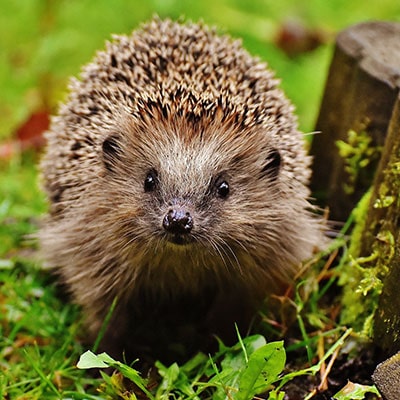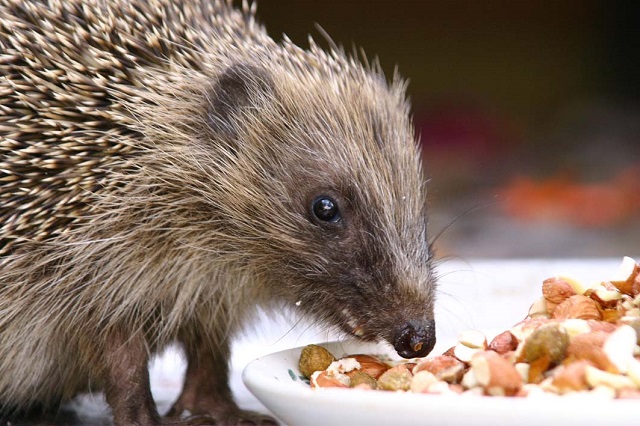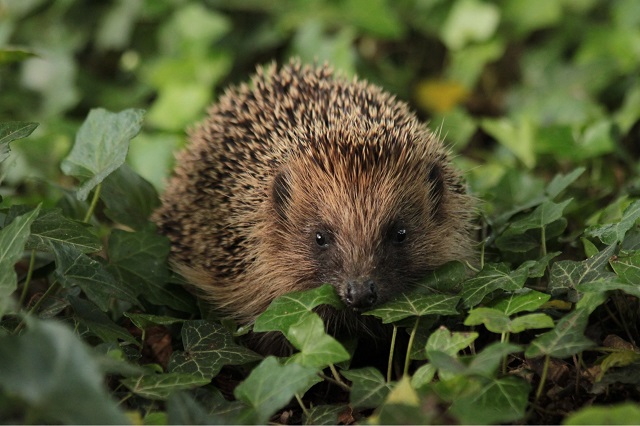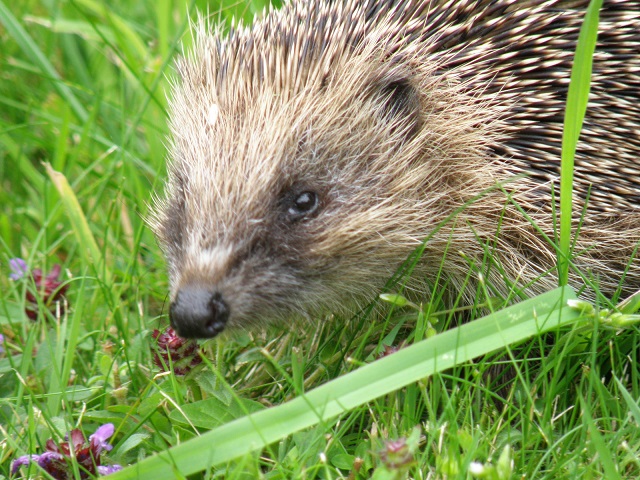
Earlier this month, we caught up with British Hedgehog Preservation Society to talk about why hedgehogs are a gardener's best friend, how we can help cater for them in our gardens, and what they should be eating if you do find one in your garden. Check out our interview below!
Our interview with British Hedgehogs
1. Why are hedgehogs known as ‘A gardener’s best friend’?
Hedgehogs are famous for eating bugs, slugs and snails, although they do eat a huge range of other garden invertebrates as well – beetles, earthworms and caterpillars make up most of their diet. Creepy crawlies in abundance will attract hedgehogs to your garden, and, in turn, will help them to survive.
2. What good would it do, if I were to cut a small hole into my garden fence?
Hedgehogs travel around a mile per night in search of their natural food. A hole 13cm square in the bottom of your garden fence will allow hedgehogs access to your garden and others. If you and your neighbours all have holes that hedgehogs can travel through you will be helping them by creating a “hedgehog highway”.
3. What are the general dietary requirements of a hedgehog?
Hedgehogs eat a variety of insects, molluscs and other invertebrates, often switching from one food type to the other depending on the time of year. They also need to drink water. Offering hedgehog food, meaty cat or dog food, chopped unsalted peanuts or sunflower hearts can be a help to supplement a hedgehog’s diet, and in dry periods especially, offering water can be a life-saver.

- British Hedgehog Preservation Society
4. What is the best advice you could give someone who has just found a hedgehog in their garden?
If you see a hedgehog out after dusk, then you could offer some food and water to encourage it to continue coming to your garden, and a wild area or log pile for it to create its day nest and later in the year to hibernate. If you see one out during the day it is likely to need help. Hedgehogs that are wobbling or ‘sunbathing’ are likely to be hypothermic and need to be rescued and warmed up gently. You can get first aid advice from the BHPS website, and if you call us (01584 890801), we can give you up to date contact details for rescuers local to you. (NB If you see one that looks healthy, moving very purposefully and out only briefly during the day, it is probably a mother with a nest of young, so don't disturb her at all - she is just having a quick break from the nest to feed herself or gather nesting material).
5. How can people create more of an awareness about hedgehogs and help to protect their environment?
People can talk to their neighbours about joining up their gardens to help hedgehogs travel at night, and about not using poisons in their gardens – we can provide literature that they can display or deliver to their neighbours to help them to learn more about hedgehogs.
Hedgehog Street (a joint initiative of BHPS and People’s Trust for Endangered Species) encourages people to become Hedgehog Champions – see www.hedgehogstreet.org. The Big Hedgehog Map allows you to log sightings of hedgehogs and also map gaps in fences.
6. “I would like to own a garden hedgehog.” Where can I get one and how do I make my garden as ‘hedgehog friendly’ as possible?
You can never “own” a wild hedgehog – they are wild animals and as mentioned above, need to travel over a large area to get their variety and volume of natural food. However, volunteer hedgehog carers (you can get the contact details for your local ones through BHPS) sometimes have hedgehogs to release into suitable areas. It is a very common request and most volunteers have a waiting list of potential release sites. The carer will probably want to check your garden and area is suitable before releasing a rehabilitated hedgehog with you.
To make your garden hedgehog friendly, leave an area wild in the garden, with a log pile and plenty of dead leaves; grow a variety of plants to attract plenty of natural food; avoid using chemicals in the garden, and keep all netting a foot off the ground. If there is a pond in the garden, make sure there is a sloping shelf or ramp for them to climb out – hedgehogs are good swimmers but can struggle to climb out of steep-sided ponds. Check for hidden hedgehogs before lighting bonfires, strimming and mowing the lawn.

- British Hedgehog Preservation Society
7. What would you deem to be the most misinformed information people generally have about hedgehogs?
That they have fleas – not all hedgehogs have fleas, and if they do, the fleas will be hedgehog-specific so won’t be able to survive on another animal.
That they should be fed bread and milk: these are not good for them and should not be offered.
8. What are your 5 most interesting facts about these lovable little furze-pigs?
- Evolutionarily, hedgehogs are a family all of their own; they have no close relatives among other mammals and have been a separate evolutionary line for millions of years.
- Hedgehogs can travel 1-2 miles a night in search of food
- They can move at up to 4 miles an hour on their surprisingly long legs
- Hedgehogs hibernate for the cold winter months – their bodies shut down and operate at a very low level with a slow heartbeat and cold temperature
- Hedgehogs sometimes suddenly abandon normal behaviour and begin to produce large quantities of frothy saliva with which they cover their spines – this is called self-anointing and has never been fully explained.
9. What small steps could someone take to look after the well-being of these small creatures, keeping them safe from danger?
Offer food and water in a feeding station – somewhere safe that other animals can’t get into. The simplest form would be an upturned child’s toy box with a 13cm square cut out of one side and a weight on top. A hedgehog house of similar design, but more protected from the elements would provide a safe place for a hedgehog to nest during the day and during hibernation – providing nesting material such as straw or dry leaves nearby is also helpful.
Don’t drop litter – it can cause real problems for many animals, with hedgehogs’ spines making them particularly vulnerable to getting tangled in elastic bands etc.

- British Hedgehog Preservation Society
10. How can someone get involved with The British Hedgehog Preservation Society and is there a membership fee?
We welcome members and are very grateful for their support – the funds raised through membership help us with our education and information activities. Members receive a membership pack and certificate and twice-yearly newsletters. Individual membership costs £7.50 per year; Family or Group membership is £12.50 and Overseas members pay £10.00 per year. Life membership costs £200.00. To find out more or join us, call 01584 890801. If you would like to consider becoming a hedgehog rescuer, do call us and we can give you further information about that.




